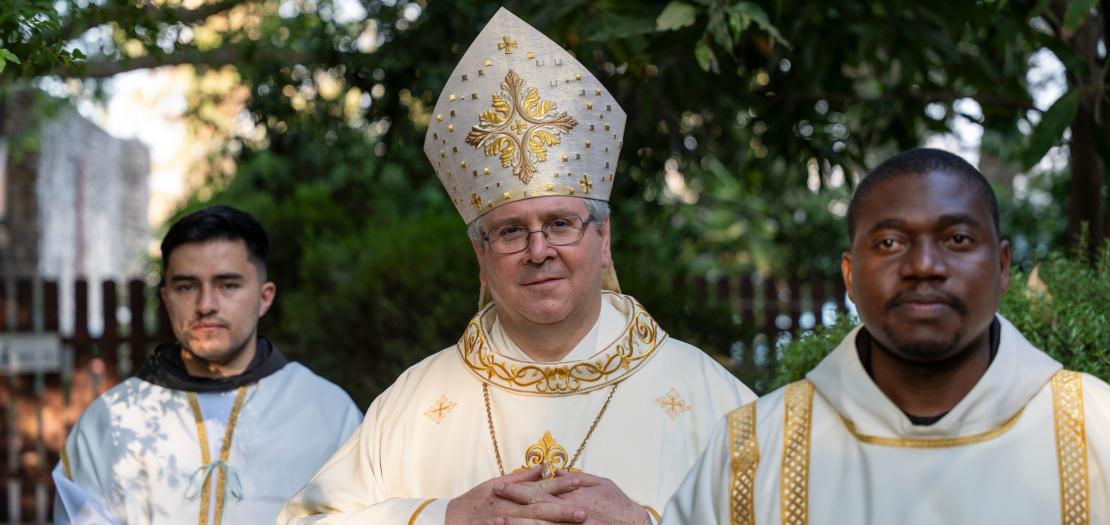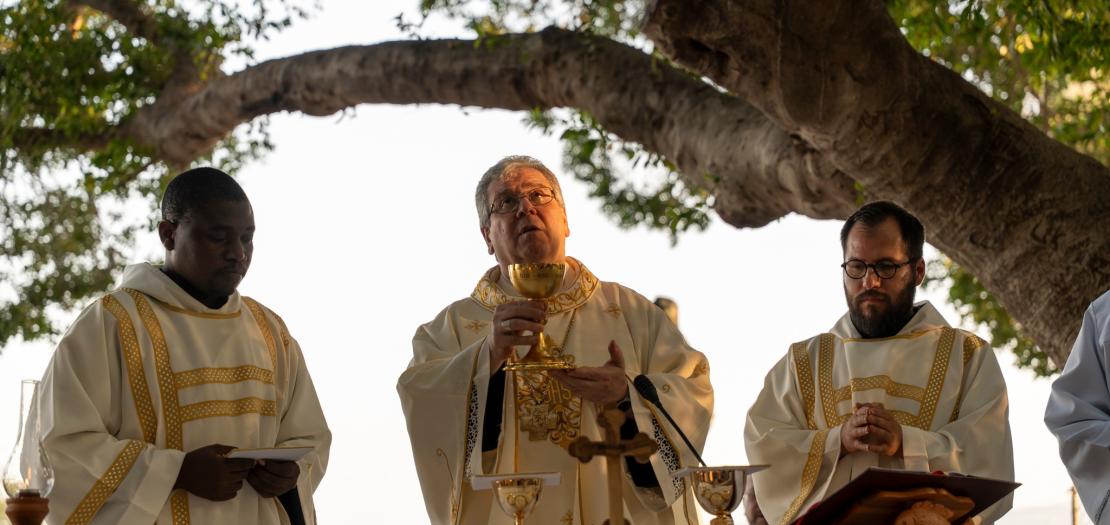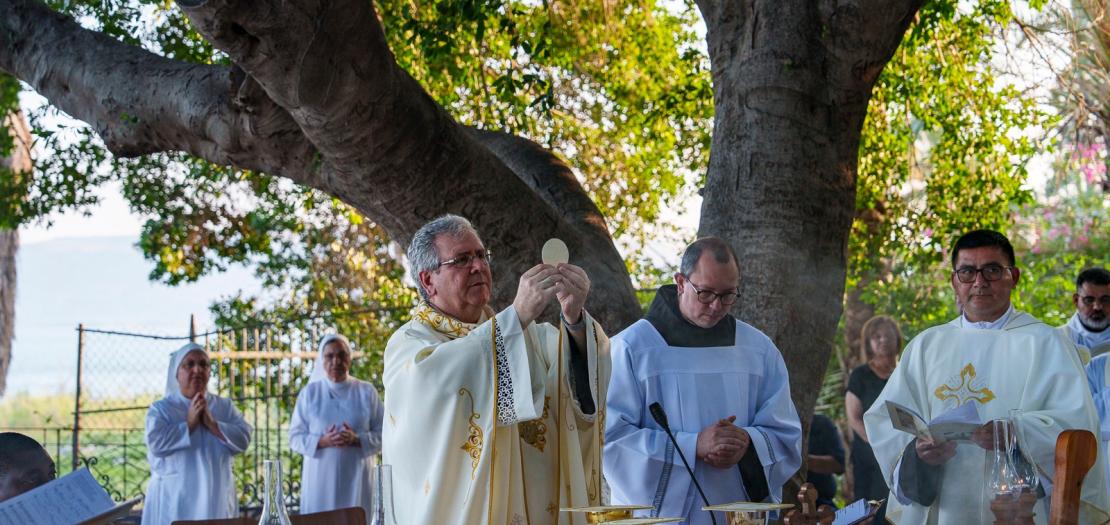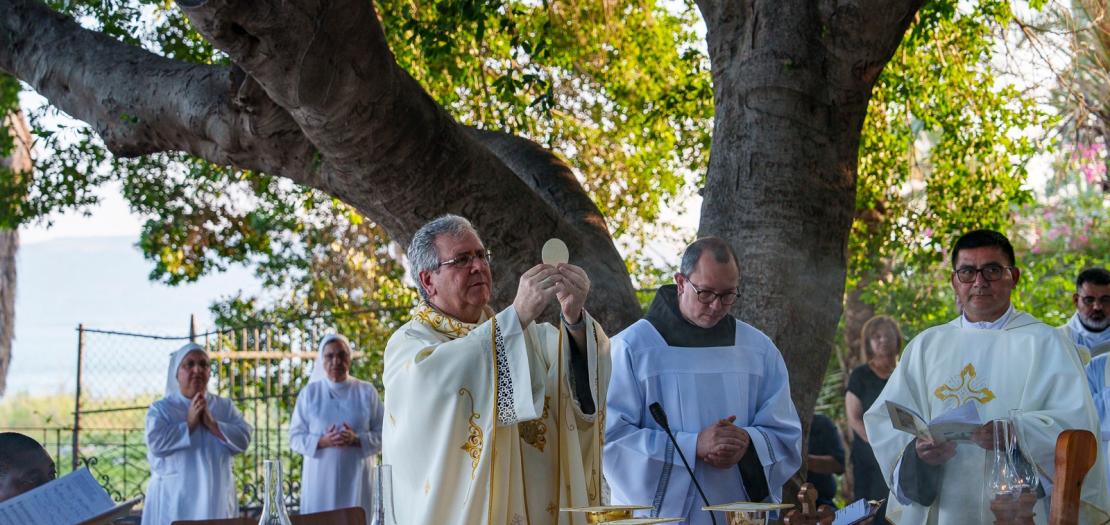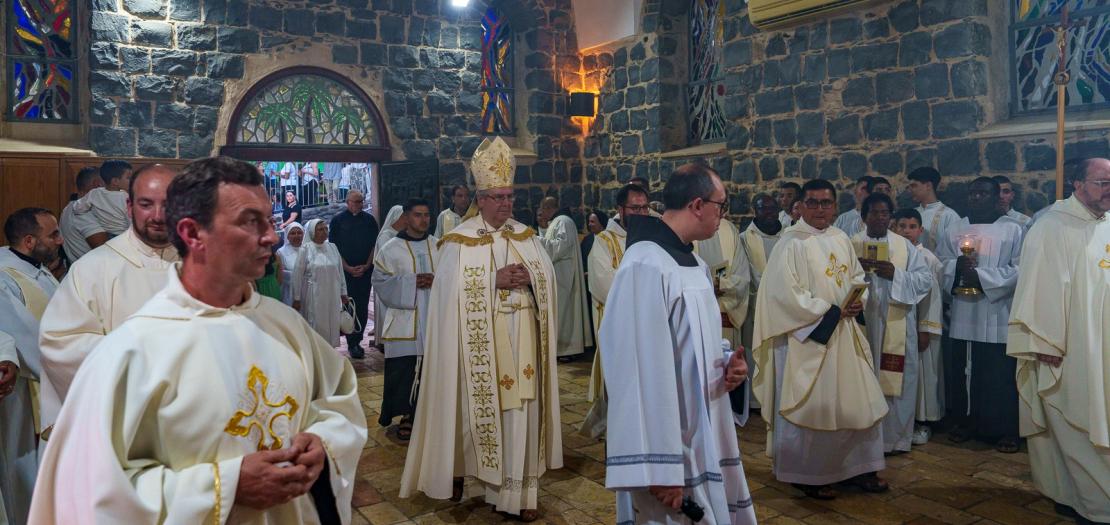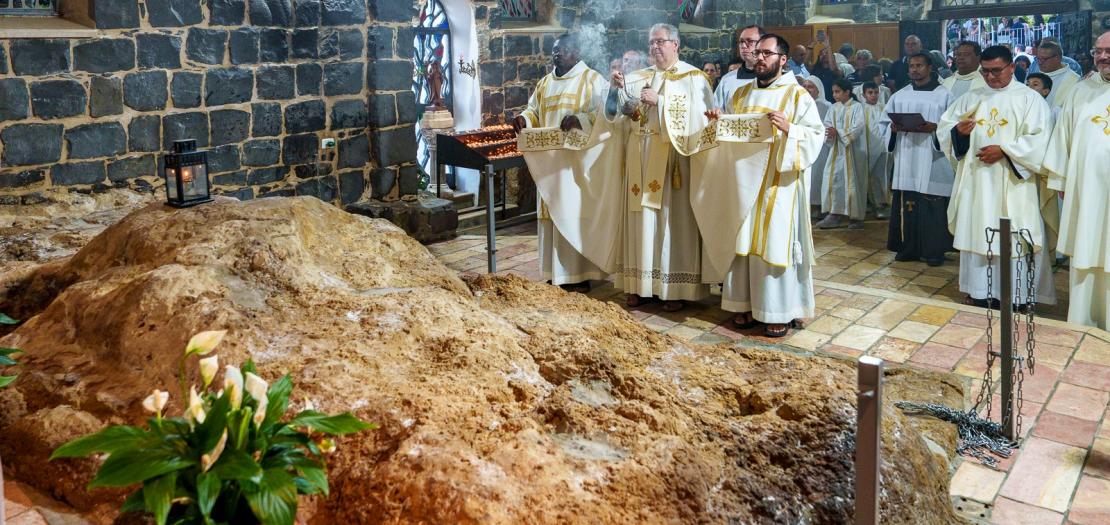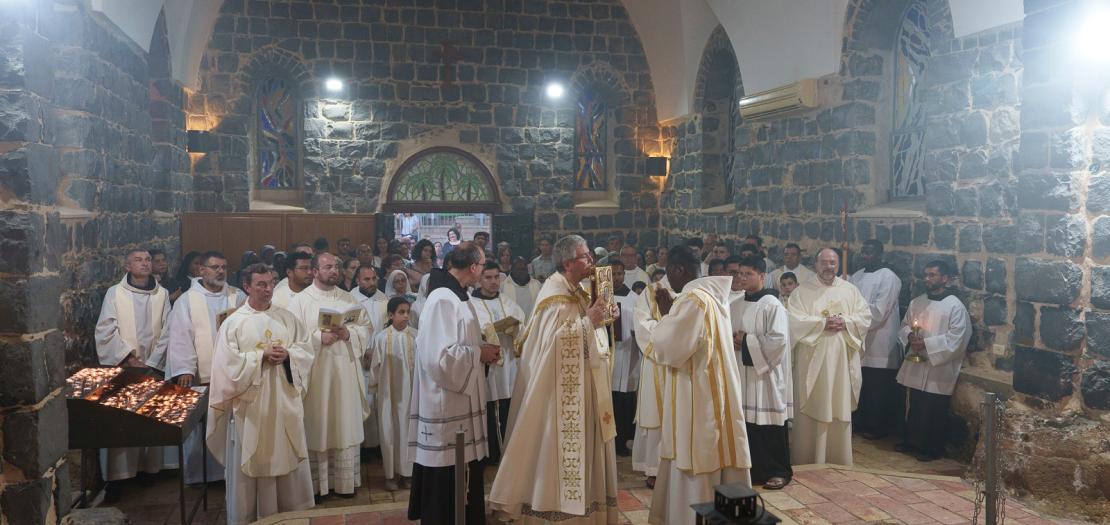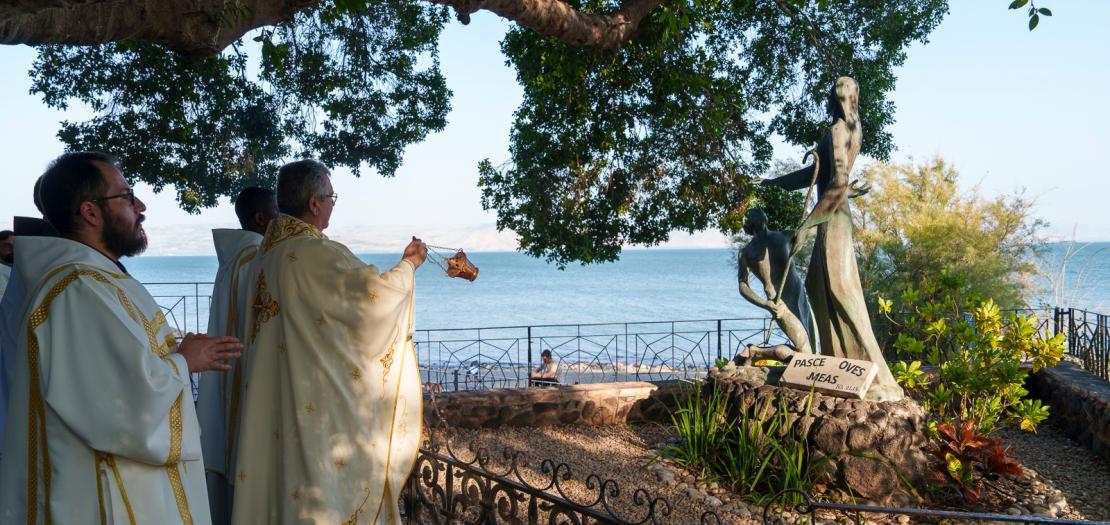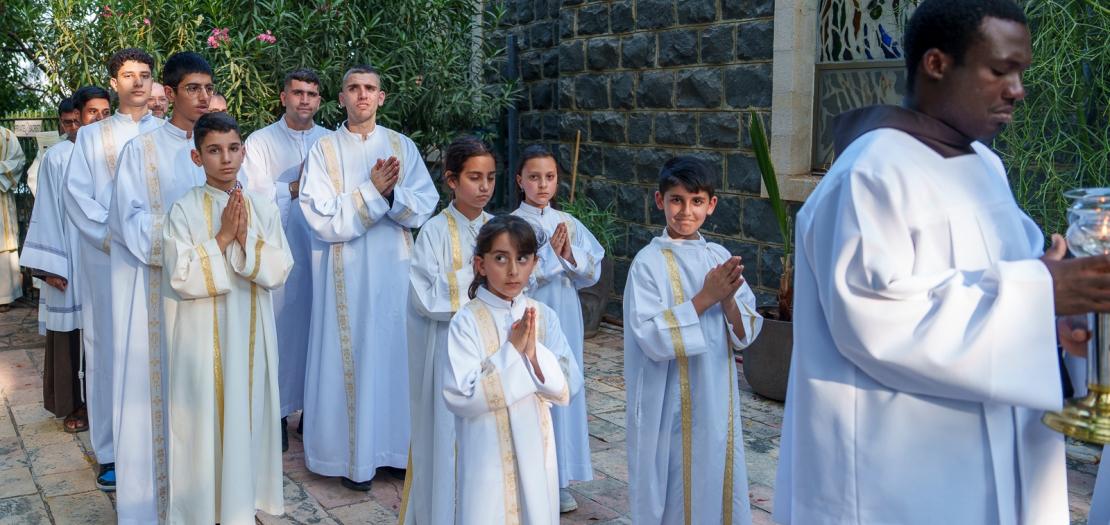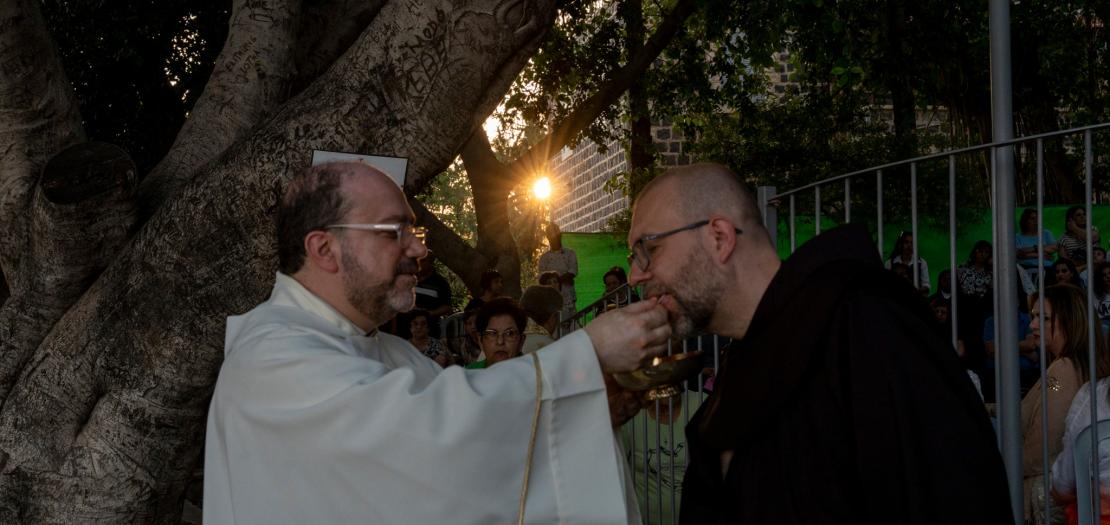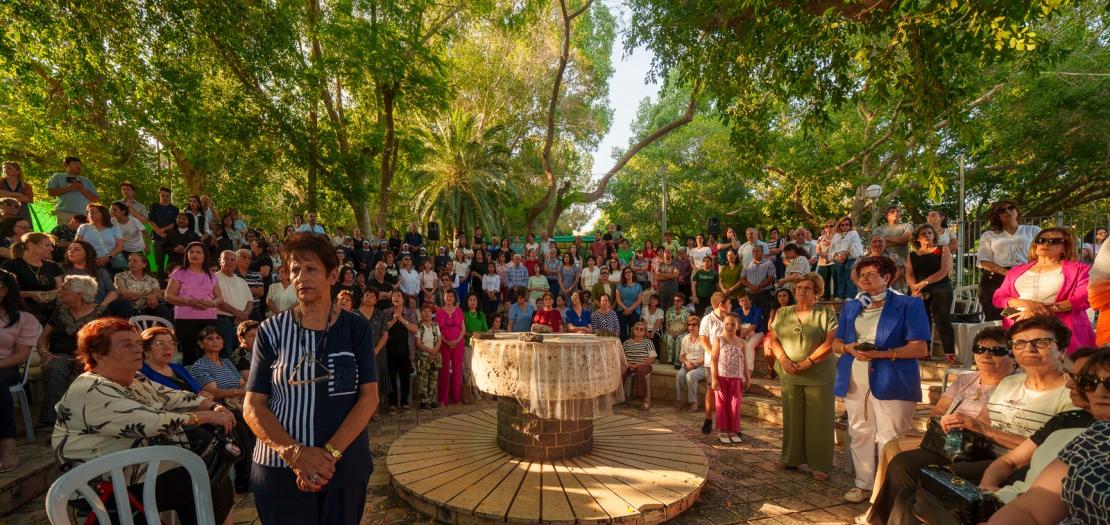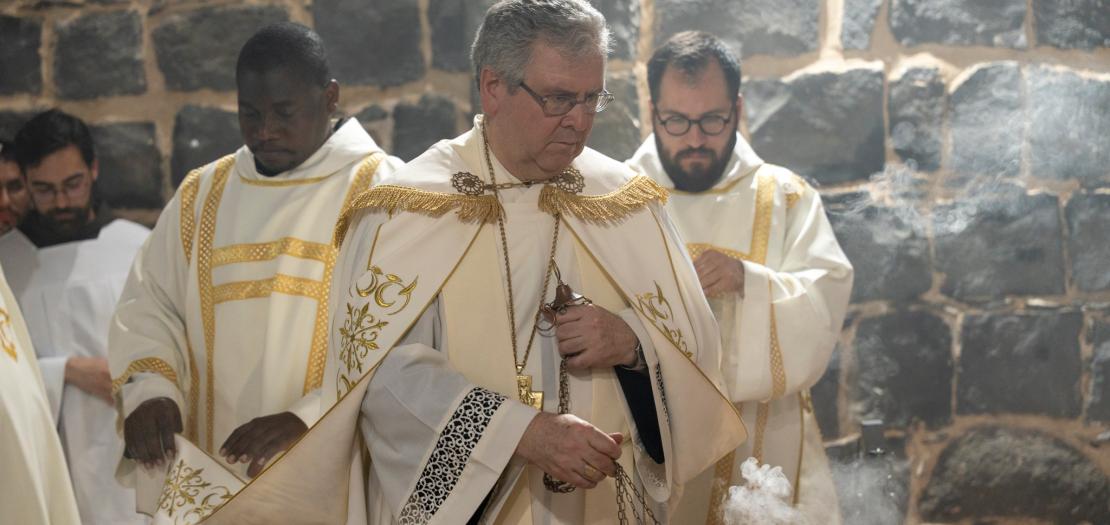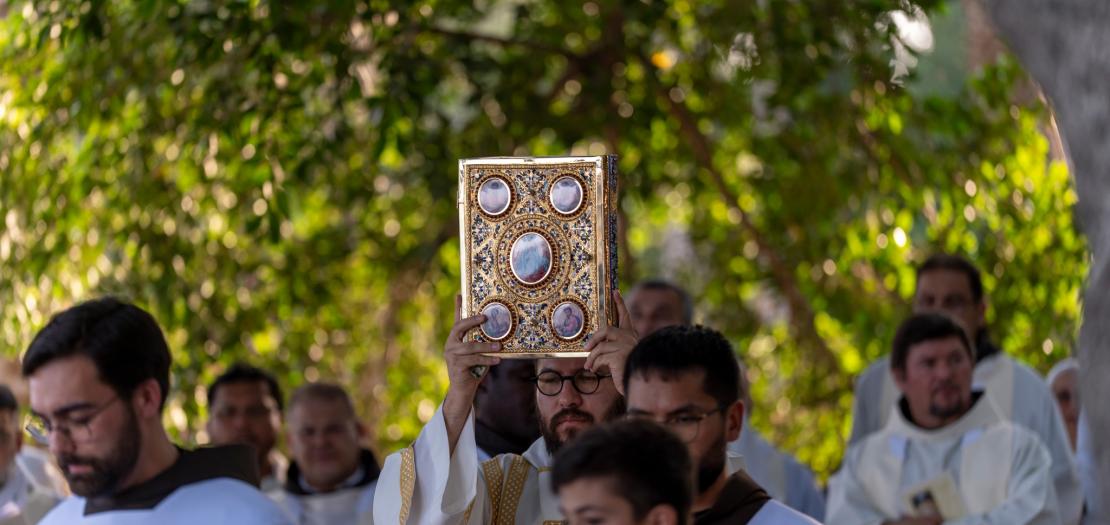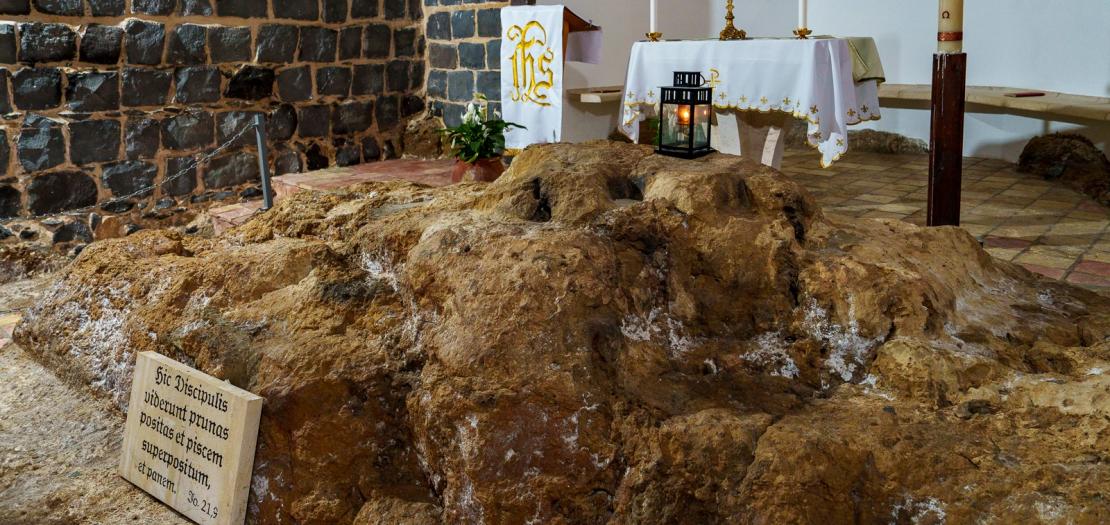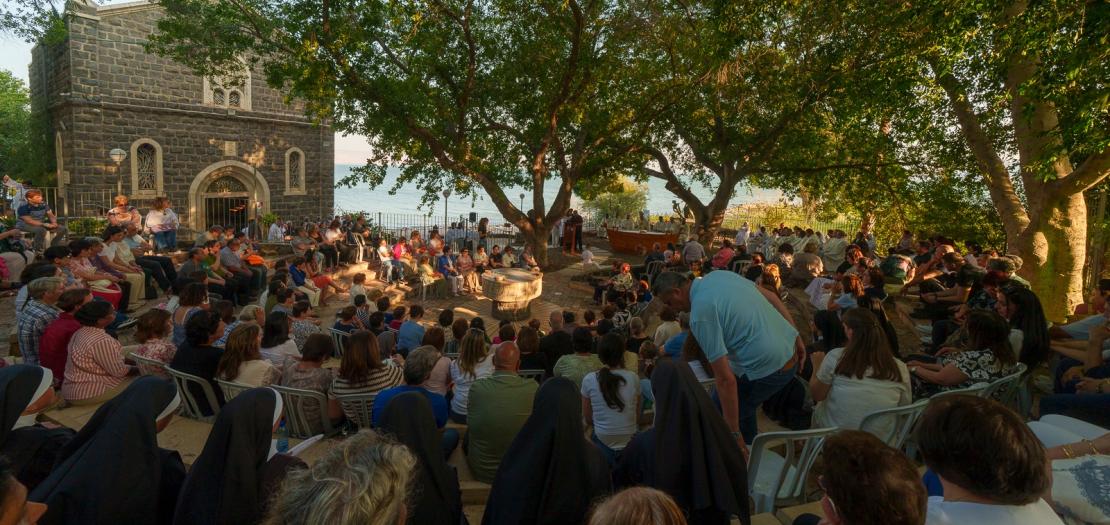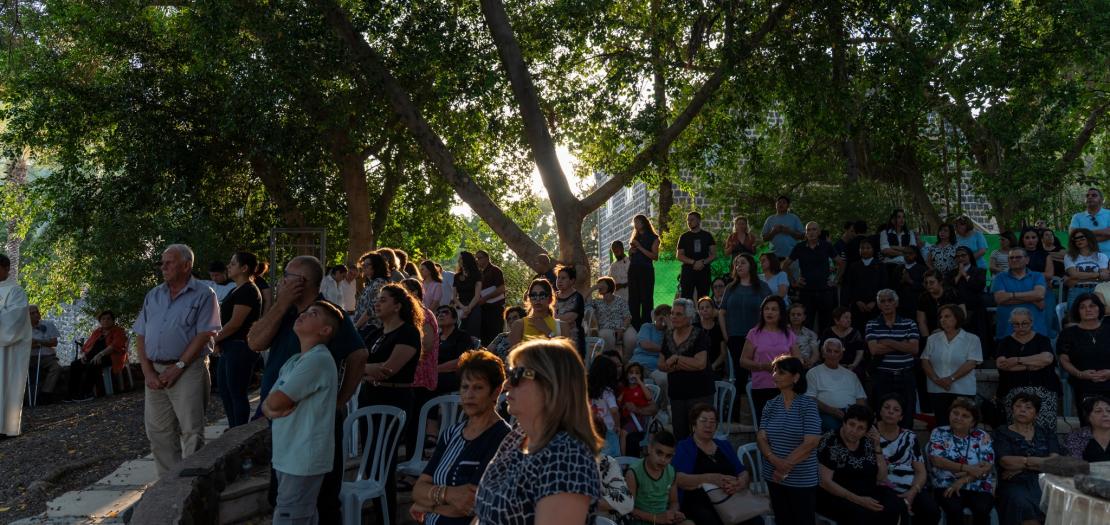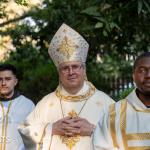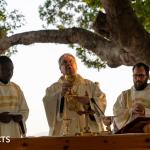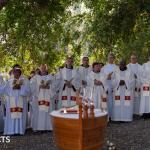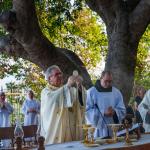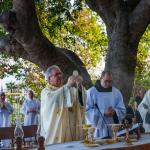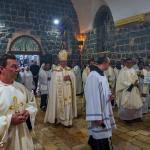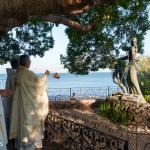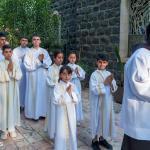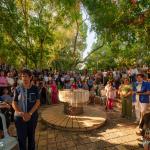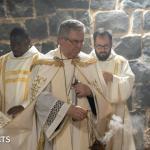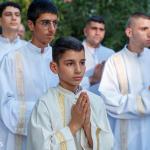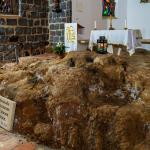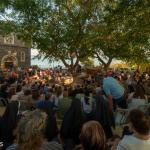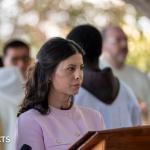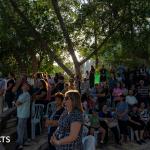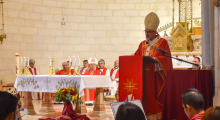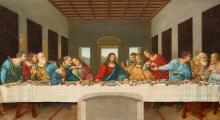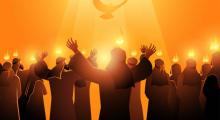Issued by the Catholic Center for Studies and Media - Jordan. Editor-in-chief Fr. Rif'at Bader - موقع أبونا abouna.org
On June 6, 2025 on the shores of the Sea of Tiberias, the friars of the Custody of the Holy Land, along with faithful from nearby areas, celebrated a solemn Mass at the Chapel of the Primacy of Peter, at the place where, the risen Jesus met the apostle Peter after his fall. The liturgy, led by the Custos of the Holy Land, fra Francesco Patton, brought together pilgrims, religious, and local faithful in a moment of prayer and reflection by the lake.
"The Risen One returns to reconnect the broken thread," were the words with which fra Ibrahim Sabbagh, parish priest of Nazareth, opened his homily, indicating in the dialogue between Christ and Peter not only the heart of the Gospel, but also the heart of every human journey marked by fragility, falls, and the desire for reconciliation.
A place carved in the memory of faith
Tabgha, anciently known as Heptapegon, "seven springs", is a small lush oasis located on the northwestern shore of the Sea of Gennesaret. In this corner of Galilee, one can still breathe the scent of the Gospel stories. It is here that tradition places two fundamental episodes of the New Testament: the multiplication of loaves and fishes, and the dialogue between Jesus and Peter after the Resurrection, in which the apostle is once again entrusted with the mandate, "Feed my sheep."
The Church of the Multiplication (entrusted to the Benedictines) is built on the remains of a 4th-century Byzantine basilica and houses a refined mosaic depicting loaves and fishes, a silent icon of abundance and sharing. A few minutes' walk away, the Chapel of the Primacy, built of dark basalt, stands directly on the lake. Here, on the shore, Peter listened to the three questions that changed his life.
Peter's wounded heart
Fra Ibrahim's homily retraced the depth of that moment. "Peter probably had not yet managed to forgive himself."The disciple, who had promised fidelity and then denied the Master, was lost. Although he had seen the risen Jesus, Easter had not yet been fulfilled in his heart.
Jesus, knowing everything, does not stop at simply welcoming him back. He goes further. "Jesus does not revoke Peter's vocation because of his fall, but makes it more mature and solid after his experience of weakness, "continued the parish priest of Nazareth. This is where the greatest miracle occurs—not that of the abundant catch, but that of the healing of wounded love.
A pedagogy of mercy
In the dialogue between Jesus and Peter, every word is chosen carefully. To the question "Do you love me?", Peter responds sincerely, but also with awareness of his own limits. The third time, when Jesus lowers himself to Peter's level and uses the Greek verb philein, meaning brotherly love or affection, Peter is saddened—not out of doubt, but out of humility: "Lord, you know everything... you know that I love you."
"Peter walks in this love with small but sure steps," emphasized fra Ibrahim. It is no longer a matter of impulsive enthusiasm, but of love purified by the fall and lifted up by grace.
Mission reborn from the wound
It is at that moment that Jesus renews the mission, "Feed my sheep." Not a simple forgiveness, but a new commissioning. Peter, the disciple who betrayed, becomes the foundation of the Church. The lowest point of his story becomes the starting point for a stronger, truer, more human vocation.
"Christ is risen! — He is truly risen!" proclaimed fra Ibrahim at the conclusion of his homily. "And Peter can shout it, because he has experienced this resurrection within himself, not as an external event, but as a power of healing and liberation."


